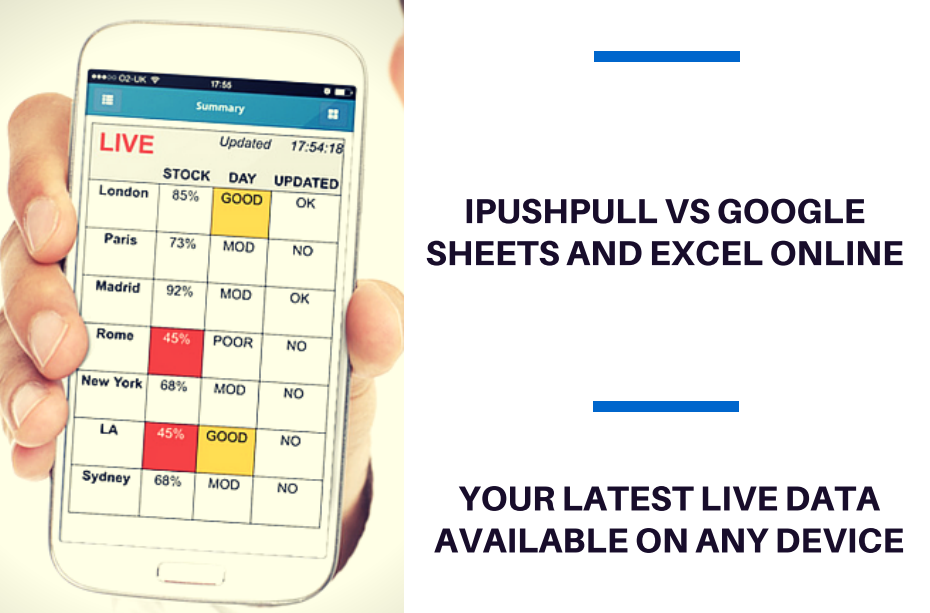How ipushpull cloud-enables firms to seamlessly share live, streaming, and on-demand data with Data-as-a-Service.
There have been many unpredicted outcomes from the current COVID-19 pandemic, but one of the more interesting ones has been the rapid acceleration of digitalisation. How rapid? Well, earlier this year, Microsoft’s CEO Satya Nadella stated that they’d seen two years’ worth of digital transformation occur within the space of two months, something that was inconceivable at the start of the year. While IBM’s CEO Arvind Krishna said “history will look back on this as the moment when the digital transformation of business and society suddenly accelerated”.
Like many other industries, the financial markets sector, with so many staff confined to working from home in 2020, has suffered severe disruption to existing workflows, forcing firms to readjust their working practices.
But with every challenge comes opportunity, and the savvier firms are looking not only at how to get through the current situation, but how they can transform their business for the better over the longer term by utilising Cloud – and specifically Data-as-a-Service (DaaS) – as an enabling technology.
What is DaaS & what can it offer?
Data-as-a-Service provides the ability to seamlessly connect your data to the right person, at the right time, in the right application. This means that you can share your data – which could be sitting in a database, in a platform, or even in a spreadsheet – with your clients, your counterparties, or your colleagues, directly into applications they’re already using. Excel spreadsheets, chat platforms, chatbots, even internal platforms via an API, for example.
ipushpull’s approach to DaaS is to integrate into both legacy and cloud-based technologies, enabling firms to access and share live, streaming, and on-demand data across the entire trade lifecycle, from the front office through to the middle and back office.
To offer a few examples, live data might be an investment bank distributing live ‘high touch’ bond axes to the buyside’s spreadsheets, OMS or chat platform. Streaming data could be where a market-maker is constantly updating quotes from an internal pricing engine, or a broker client workflow of publishing real-time prices to clients in a ‘call around market’. And on-demand means that end users can pull the most up-to-date data from any data source. Ops users may be pulling down the latest list of ISINs to match to RIC codes for example, or risk managers might need to see live P&Ls in Symphony or Slack.
All of this needs to come with the requisite enterprise security, control, and audit necessary for financial markets.
Embracing the Cloud
Historically, data sharing in capital markets has been problematic. Either it’s been done manually, through emails, file sharing, and copying/pasting data – which is then very hard to streamline, automate, and audit – or firms have had to use expensive developers to connect data together, with none of it being ‘out of the box.’
ipushpull bundles all the data and tasks that were spread across spreadsheets, email and file shares into a new structured flow into any connected application. Utilising the Cloud as an enabling technology means you can share data inter as well as intra company. You can share data to trigger workflows with external clients, customers, and teams, and do it in any application via plug and play. And using the Cloud means it’s incredibly scalable, it’s significantly cheaper than trying to build it yourself, and it has a fast time to market.
The Cloud also offers several commercial benefits for both the suppliers of data and the end-users. From the end-user perspective, only paying for what you need allows you to match and scale your operational costs more closely with your trading activity, for example.
Beneficial use cases
Where our customers already have the data and the platform, but may lack the distribution into end-user applications, they have successfully used ipushpull either for the first or the last mile of connectivity.
The first mile is where data may be unstructured or sitting in an application or system that generally does not have any external connectivity. By connecting into ipushpull, data can be securely pushed into the Cloud and then made available elsewhere.
The last mile is about getting data into the applications or tools that your clients or your teams already use, so nothing new needs to be installed. That data can be coming directly into spreadsheets, into chat, or collaborative apps such as Symphony or Slack, or straight into your internal blotters or platforms that you might be using for that last mile of distribution.
Importantly, nothing is on-premise. Everything happens via the Cloud. Rather than engage costly development teams, or rely on manual processes where someone has to copy and paste from one application to another and send it to a counterparty who is doing something similar – a process that involves lots of manual tasks, emails, spreadsheets, copy/pasting and the like – by moving to this new way of data sharing, it unlocks both technical efficiency and automation, which means your staff can spend their time on higher-value activities or things that only humans can do such as being creative, complex decision making or speaking to clients.
A growing number of firms, including panelists from our recent webinar, such as NatWest Markets and Euromoney TRADEDATA, are now utilising different flavours of the examples given above. All of them are using ipushpull to accelerate digital initiatives to widen digital distribution channels and provide better experience for their clients and workflow efficiency and automation for end-users.
Conclusion
The digitalisation of these types of use cases will become more commonplace as people question why they are still using manual processes or one-off development projects to share data. As Data-as-a-Service becomes more prominent and firms look for technical efficiency and automation, we’ll see this new way of sharing data becoming the norm.
We see it already in the digitisation and electronification of OTC markets, where manual processes make way for standardised delivery of prices and workflow, but why stop there? Live data sharing can be ubiquitous internally across the firm, and externally to clients and counterparts – all of this being accelerated by the Cloud and by integrations into financial networks like Symphony, Refinitiv, Bloomberg, Broadridge, DTCC, Markit, etc.
In the post-COVID landscape, there is no new norm anymore. There is only a future state. As working practices change, workflow needs to be more efficient, and data needs to be easy to access, secure and access-controlled.
As we move towards live data-driven workflows, people need to be able to seamlessly connect to data in any application in real-time, at the right time, at the right place, and from any location.
We’re seeing Data-as-a-Service being adopted across sales and trading, between sell-side and buy-side, and across technology vendors. All of them are providing a better and more efficient experience for their clients.
It’s time to move away from manual processes, emails, spreadsheets, and copy/paste and away from embarking on expensive development projects to connect data from one app to another. Instead, look to incorporate Data-as-a-Service into your digital transformation projects or as a new digital distribution channel.
On-demand Webinar & Report: Digitisation of Pre-trade Client Workflows
Learn how J.P. Morgan, Goldman Sachs, Insight Investment and TP-ICAP are approaching the digitisation of pre-trade client workflows.
Understand how market infrastructure providers like CurveGlobal, Symphony and ipushpull are facilitating this by improving price discovery and building liquidity through standardisation, automation and live data.















